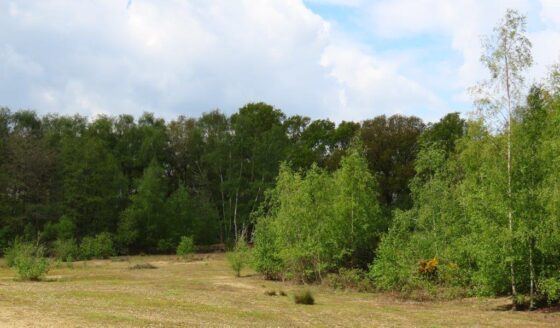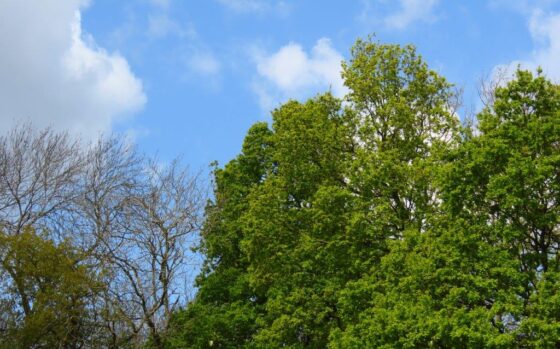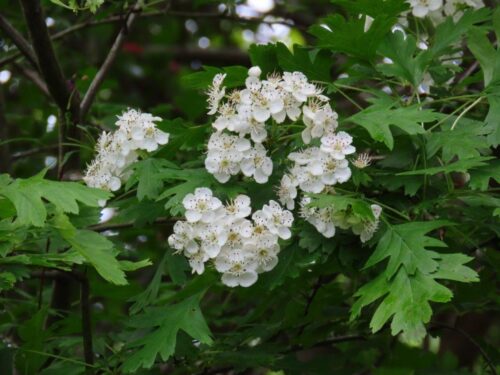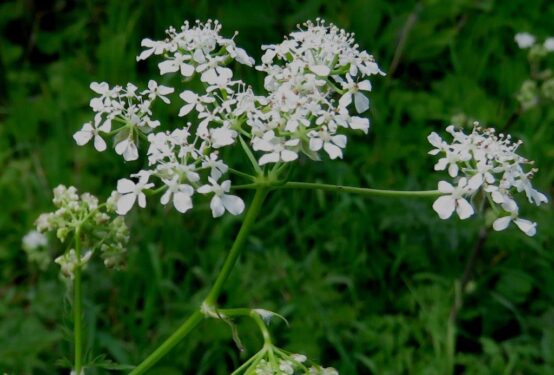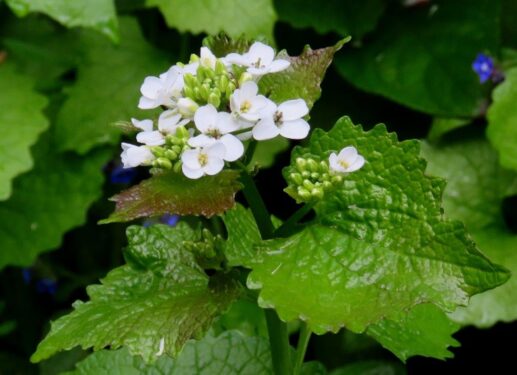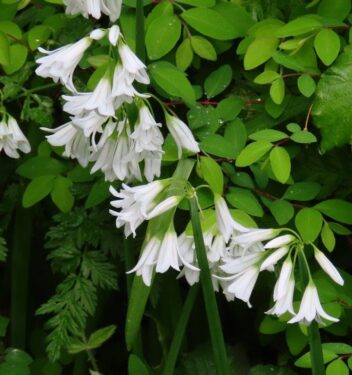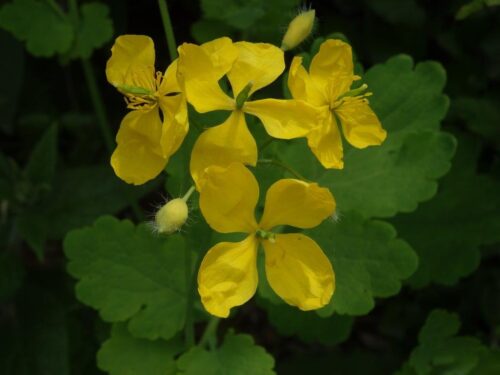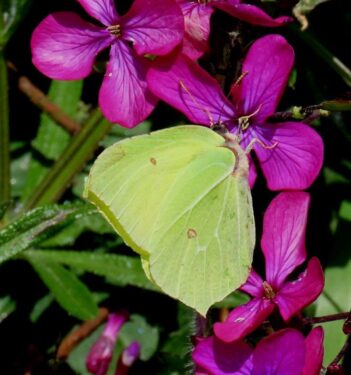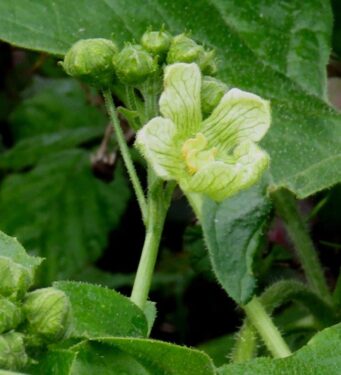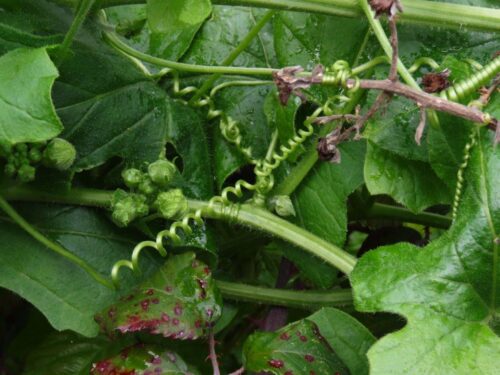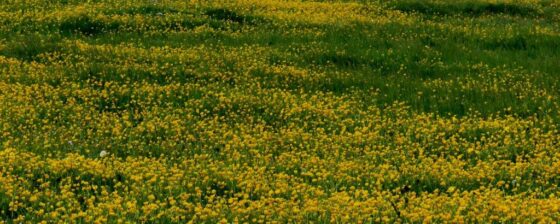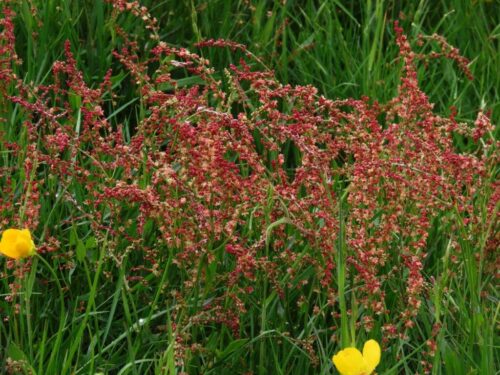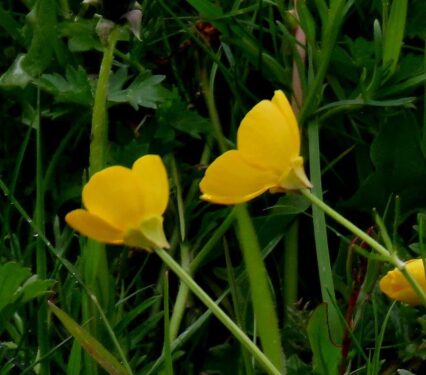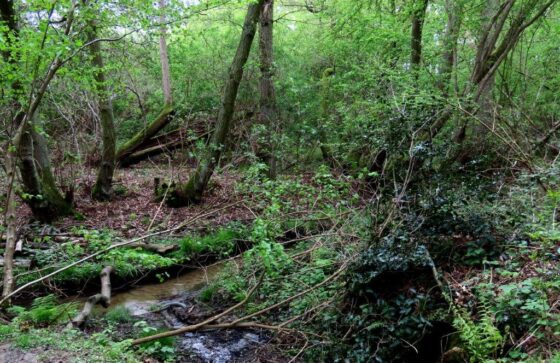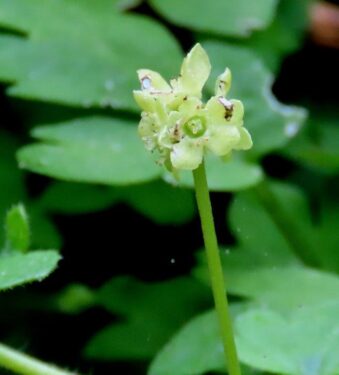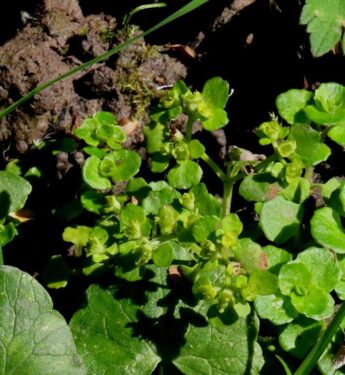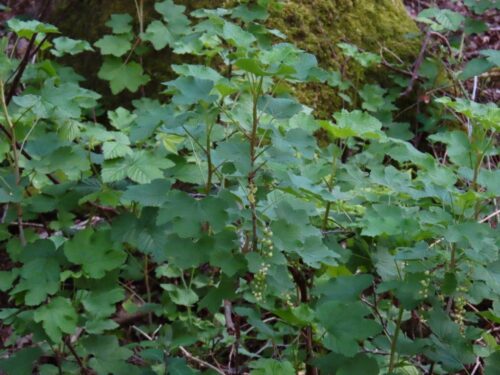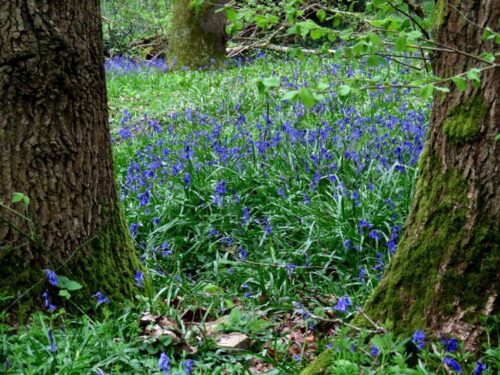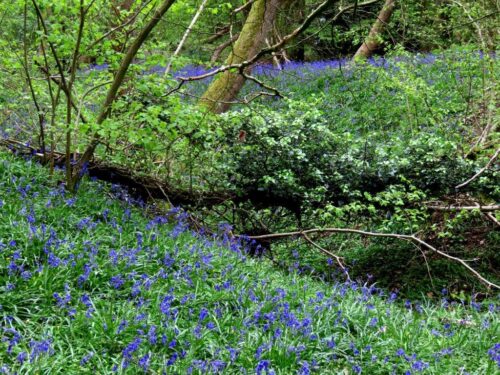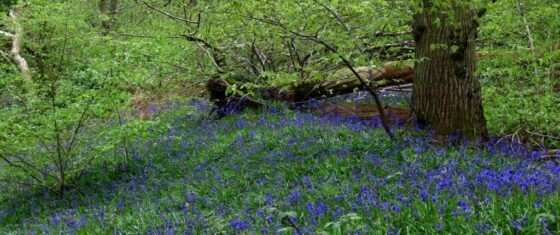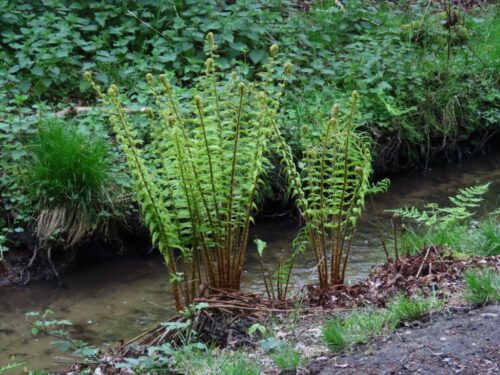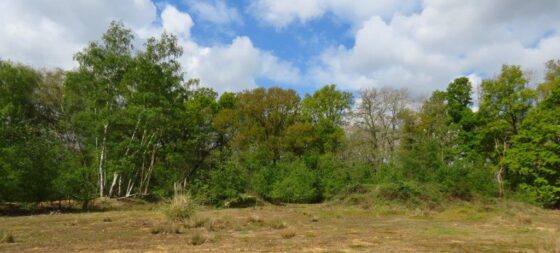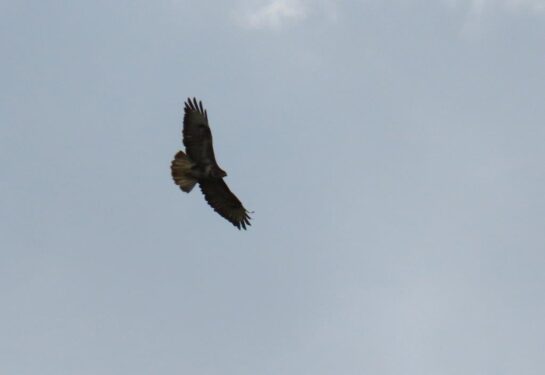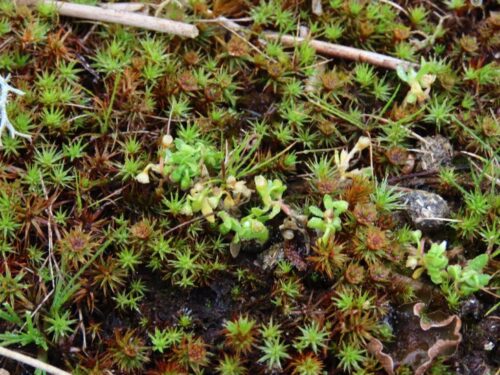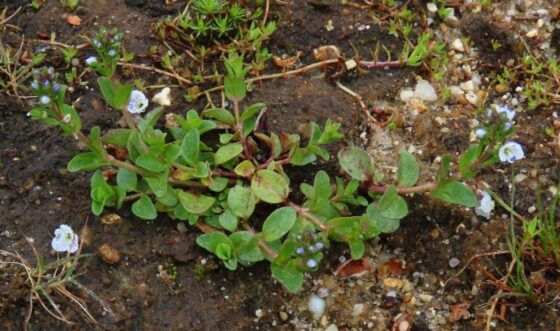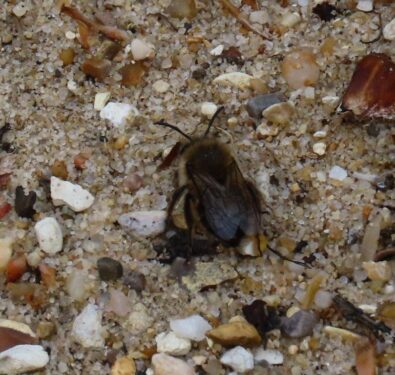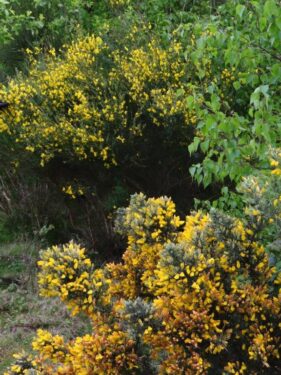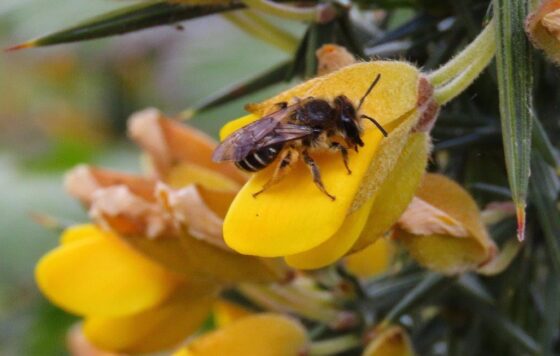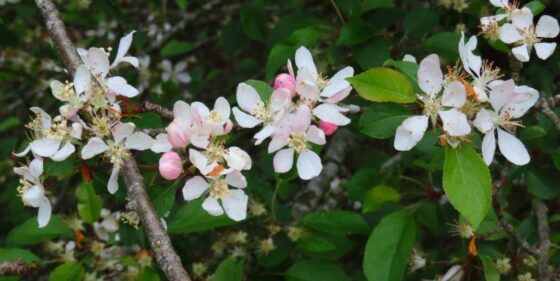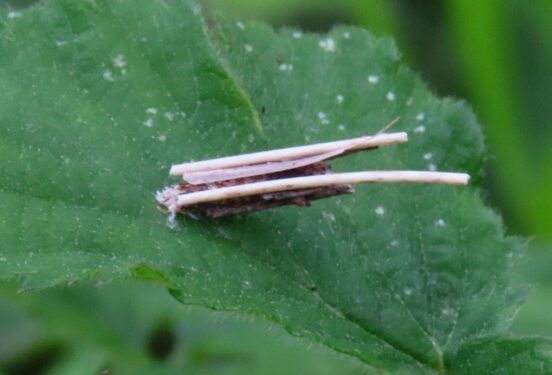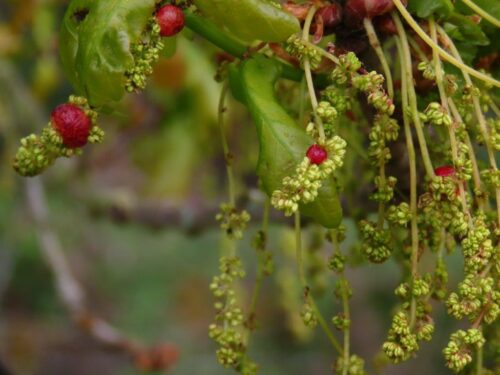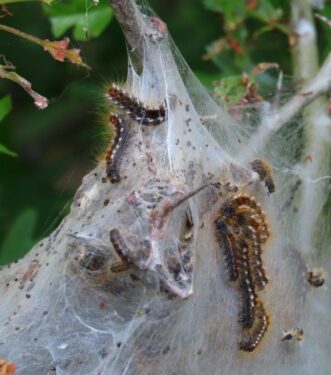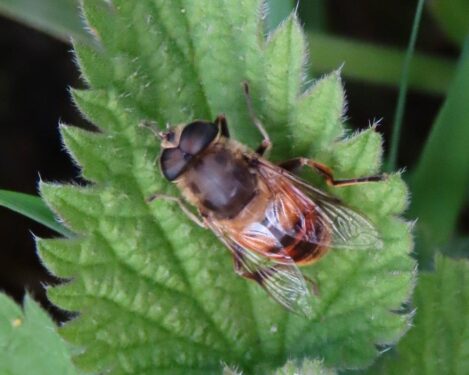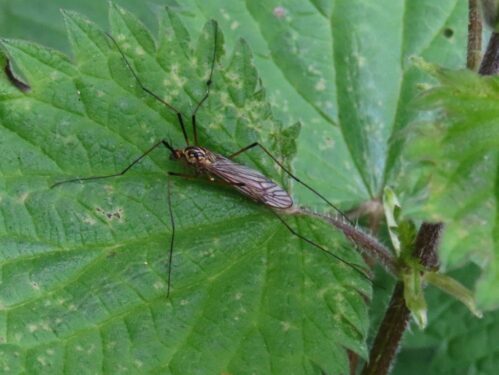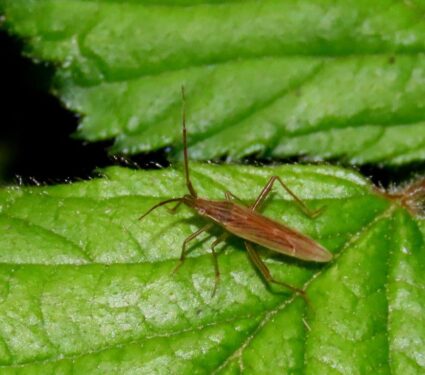As is now traditional we headed off to Cockaynes Reserve for one of our main springtime walks, although the cool weather initially made it feel almost wintry. Fortunately as the morning progressed, and contrary to forecasts, the sun did come out, and sheltered from the breeze it even felt quite warm, a rather unusual occurrence in the unsettled early part of this year.
But whatever the temperature there is no mistaking the fact that the hands of the seasonal clock are turning. Walking up Ballast Quay Lane, the hedges and verges were filled with flower and fragrance, with Cow Parsley and Hawthorn scent combining in Chris’ personal Maytime Proustian madeleine, taking him back to the days of innocence, cycling the byways of the Yorkshire Wolds as a lad…
Add to that the blue of Evergreen Alkanet, the white flowers and garlic aroma arising from both Garlic Mustard and Three-cornered Leek, yellow Greater Celandine, and the purple (occasionally white) flowers of Honesty, the latter attracting the attentions of a lovely male Brimstone for the back-markers at least.
And in a nod to the coming summer, White Bryony just coming into flower while stitching together the hedge with its telephone-cord tendrils:
At the top of the hill, splendid views over the Colne Estuary, Skylarks singing, and a meadow full of Bulbous Buttercups, interspersed with drier patches dominated by rusty-flowering Sheep’s Sorrel …
And then into Villa Wood along the newly refurbished path, to be enveloped by bird song – Chiffchaffs, Wrens, Blackbirds, Robins, Blackcaps and a tantalisingly distant Nightingale – and the sound of a tinkling Sixpenny Brook, with a little Town-hall-clock and Opposite-leaved Golden-saxifrage still flowering.
The Redcurrants were in unripe fruit, Wood Anemones all-but-finished, Bluebells of course just reaching their peak on the drier slopes and sprouting ferns in the damper spots.
Moving out into the open ground left behind after gravel extraction, a backward glance showed the beauty of the infinite spectrum of greens shown by newly emerged leaves, a sight equalled by the sound of a much nearer Nightingale in full rhapsody, and displaying Buzzards overhead:
The bare sandy areas hosted a basking Peacock, with flowering Blinks, Changing Forget-me-not and Thyme-leaved Speedwell, and just a few Bunny Bees moving around their active colony (it had been a very cold, almost frosty night preceding, so the lack of action was not surprising).
In the heathy areas, both Gorse and Broom in flower were attracting bumblebees, along with Small Gorse Mining-bees, and held numerous singing male Whitethroats, while the Crab Apple on the corner of Cockaynes Wood was already well past its best, a sign of the largely frost-free winter.
And finally a few invertebrates, expertly spotted by Jude: a bagworm moth Psyche casta, redcurrant galls in Oak flowers (the spring generation galls of the same tiny wasp that produces the more familiar spangle galls in autumn), Brown-tail Moth caterpillars sunning themselves on their web with impunity (protected from most bird predation by their irritant hairs), a few hoverflies and tiger-craneflies, and a grass bug Stenodema calcarata.
As usual, all kinds of everything to suit all tastes, and wrapped up very well with a pint in the Greyhound garden, sitting in the sun, with a Red Kite low overhead. What could be better? Thanks to all who came along and helped make it such a good morning, particularly Peter Hill who was able to explain some of the management work of the Cockaynes Wood Trust (and perhaps encourage some more volunteers to the much needed management tasks).
